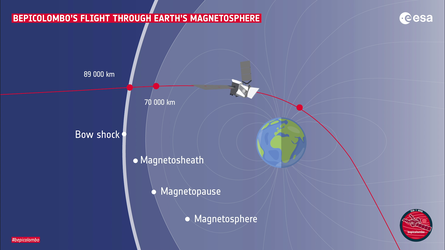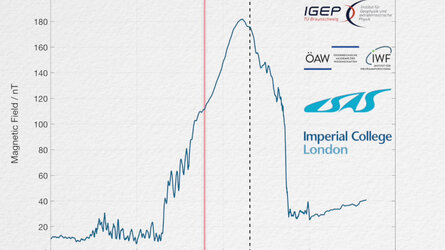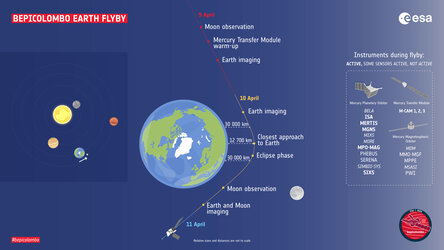Accept all cookies Accept only essential cookies See our Cookie Notice

About ESA
The European Space Agency (ESA) is Europe’s gateway to space. Its mission is to shape the development of Europe’s space capability and ensure that investment in space continues to deliver benefits to the citizens of Europe and the world.
Highlights
ESA - United space in Europe
This is ESA ESA facts Member States & Cooperating States Funding Director General Top management For Member State Delegations European vision European Space Policy ESA & EU Space Councils Responsibility & Sustainability Annual Report Calendar of meetings Corporate newsEstablishments & sites
ESA Headquarters ESA ESTEC ESA ESOC ESA ESRIN ESA EAC ESA ESAC Europe's Spaceport ESA ESEC ESA ECSAT Brussels Office Washington OfficeWorking with ESA
Business with ESA ESA Commercialisation Gateway Law at ESA Careers Cyber resilience at ESA IT at ESA Newsroom Partnerships Merchandising Licence Education Open Space Innovation Platform Integrity and Reporting Administrative Tribunal Health and SafetyMore about ESA
History ESA Historical Archives Exhibitions Publications Art & Culture ESA Merchandise Kids Diversity ESA Brand Centre ESA ChampionsLatest
Space in Member States
Find out more about space activities in our 23 Member States, and understand how ESA works together with their national agencies, institutions and organisations.
Science & Exploration
Exploring our Solar System and unlocking the secrets of the Universe
Go to topicAstronauts
Missions
Juice Euclid Webb Solar Orbiter BepiColombo Gaia ExoMars Cheops Exoplanet missions More missionsActivities
International Space Station Orion service module Gateway Concordia Caves & Pangaea BenefitsLatest
Space Safety
Protecting life and infrastructure on Earth and in orbit
Go to topicAsteroids
Asteroids and Planetary Defence Asteroid danger explained Flyeye telescope: asteroid detection Hera mission: asteroid deflection Near-Earth Object Coordination CentreSpace junk
About space debris Space debris by the numbers Space Environment Report In space refuelling, refurbishing and removingSafety from space
Clean Space ecodesign Zero Debris Technologies Space for Earth Supporting Sustainable DevelopmentLatest
Applications
Using space to benefit citizens and meet future challenges on Earth
Go to topicObserving the Earth
Observing the Earth Future EO Copernicus Meteorology Space for our climate Satellite missionsCommercialisation
ESA Commercialisation Gateway Open Space Innovation Platform Business Incubation ESA Space SolutionsLatest
Enabling & Support
Making space accessible and developing the technologies for the future
Go to topicBuilding missions
Space Engineering and Technology Test centre Laboratories Concurrent Design Facility Preparing for the future Shaping the Future Discovery and Preparation Advanced Concepts TeamSpace transportation
Space Transportation Ariane Vega Space Rider Future space transportation Boost! Europe's Spaceport Launches from Europe's Spaceport from 2012Latest
The sound of Earth’s magnetic field by BepiColombo
Thank you for liking
You have already liked this page, you can only like it once!
The magnetometer (MPO-MAG ) on board of the Mercury Planetary Orbiter, one of the two orbiters comprising the BepiColombo mission, made measurements of Earth’s magnetic field during the spacecraft’s flyby of Earth in April 2020.
The audio, accompanied by the animation, is a sonification of the captured data created by the MPO-MAG team and not an actual sound recorded in space. The audio, compressing 8 hours of recorded data into a 26-second audio track, shows the moment when BepiColombo encounters the so-called bow shock at the outer edge of the Earth’s magnetosphere where the Earth’s magnetic field interacts with the solar wind. The spacecraft then passes through the magnetosheath, a turbulent region still considerably affected by the cosmic plasma, and crosses the magnetopause, the boundary after which the magnetic field of Earth dominates.
After that point, the sound of BepiColombo’s reaction wheels, which keep the spacecraft oriented in the correct direction, comes to the fore in the recording.
According to MPO-MAG Principal Investigator Daniel Heyner, of the Technical University of Braunschweig, Germany, the team could use the data recorded during the flyby to calibrate the instrument and prepare it for future measurements. The magnetometer will be on for most of BepiColombo’s seven-year cruise to the innermost planet of the Solar System, measuring the solar wind at various distances from the Sun.
The Earth flyby on 10 April 2020 was one of the overall nine gravity-assist manoeuvres required for BepiColombo to adjust its trajectory and close in on Mercury. During the manoeuvre, BepiColombo got as a close as 12 689 km to the surface of Earth and captured a series of stunning images of the planet.
-
CREDIT
ESA/BepiColombo/MPO-MAG/IGEP-IWF-IC-ISAS -
LICENCE
CC BY-SA 3.0 IGO or ESA Standard Licence
(content can be used under either licence)
-
Closed captions available Captions and subtitles are available (automatically generated by YouTube) - select your language using the YouTube player controls. A non-YouTube version is available using the 'download' button above.
-
Animation
-
-
-

The sound of BepiColombo's Earth flyby

Sound of the solar wind at Mercury

BepiColombo's first – and only – Earth flyby

BepiColombo's fifth Mercury flyby















 Germany
Germany
 Austria
Austria
 Belgium
Belgium
 Denmark
Denmark
 Spain
Spain
 Estonia
Estonia
 Finland
Finland
 France
France
 Greece
Greece
 Hungary
Hungary
 Ireland
Ireland
 Italy
Italy
 Luxembourg
Luxembourg
 Norway
Norway
 The Netherlands
The Netherlands
 Poland
Poland
 Portugal
Portugal
 Czechia
Czechia
 Romania
Romania
 United Kingdom
United Kingdom
 Slovenia
Slovenia
 Sweden
Sweden
 Switzerland
Switzerland


























